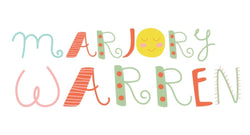Kantha
This is an exerpt from Shelly Rodes '
'The word Kantha is derived from Sanskrit, denoting a rag or patched garment. They are double-sided embroideries created from worn-out saris and dhotis, made in the Bengal region of the Indian subcontinent. It is unclear when the making of kantha first began: the earliest mention in literature dates from 500 years ago, but the oldest surviving examples originate from the early nineteenth century. Recycling, repurposing and the stitching of layers of cloth together borders were worn, and when these became old and threadbare, the long pieces of fine cotton cloth were folded into three or four layers and held together with running stitch.

Some traditional kanthas are richly embroidered with scenes and domestic objects from everyday life. Others depict whimscial figures and quirky animals and birds, or have more abstract geometric shapes, or floral and leaf motifs. These motifs are 'drawn' with running stitch, using a thread that contrasts in colour, and then filled in with decorative patterns. In old kanthas, the coloured threads were sometimes with-drawn from the border patterns woven on the edge of the saris. Other stitches besides the running stitch were used for the filling stitches, such as the back stitch and stern stitch; the placement and density of the stitches affects the texture of the cloth, causing a rippling of the surface. Traditionally, kanthas were made by women and used for household items such as bed quilts and for swaddling babies, as the cloth was usually soft, warm and comforting.
Today, recycling and repurposing continues, using coloured and printed saris in which fragments are pieced and patched together in layers. Multiple rows of running stitch unify and hold the layers in place. There are many stitch co-operatives run on a commercial basis, some creating exciting contemporary twists on traditional techniques and although the pieces they make are not traditional kanthas, they are still referred to as kantha.'

